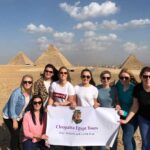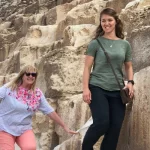What is the Valley of the Kings?
The Valley of the Kings in Egypt is the place where most of the pharaohs of the New Kingdom were buried, that is, from that time when ancient Egypt was an empire that extended along the eastern coast of the Mediterranean (the 18th, 19th, and 20th dynasties). It was there that they were buried, for example, Thutmose III, Tutankhamun, and Ramses.
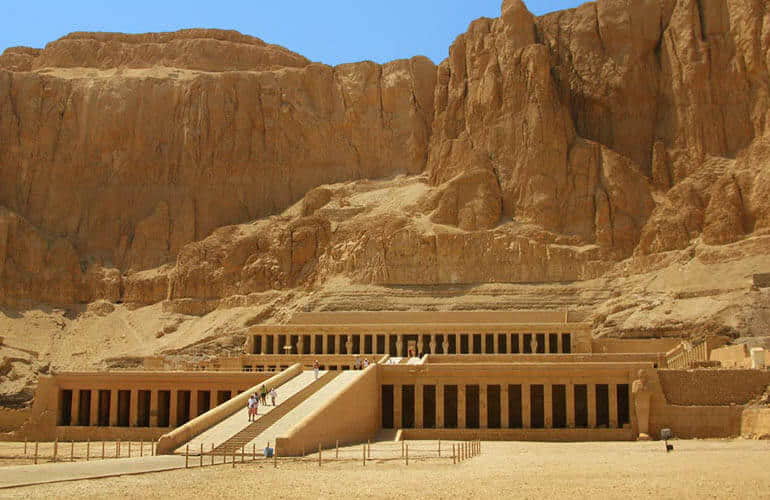
In the beginning, during the old and Middle Kingdom, the Egyptian kings were buried in pyramids built in the northern part of the country, near Memphis, which was the capital. After the last pyramids were built, Egypt was in crisis and the pharaohs lost their power. From Asia came to a group of people who dominated the Delta area, they were the Hyksos, the southern part of the country was left in the hands of a ruling family based in Thebes. Egypt was divided into two.
Why is the Valley of the Kings important?
As is logical, the princes of Thebes were buried in their city on the west bank of the Nile. When the Theban royal family managed to reconquer the whole country and its members became the new pharaohs, they decided that Thebes would be the new capital and that they would not continue building pyramids [ Read the full article about the Pyramids of Giza ], as they were too big and easy to steal if no one was watching. They preferred to bury their mummies in a more secluded and discreet place, where no one could approach and they were safer. They found the perfect place on the western shore of Thebes. It was a secluded and lonely valley with plenty of space inside for digging out the tombs, and the access was a narrow passage. It is what we know today as the Valley of the Kings.
Why the ancient Egyptian change to the Valley of the Kings?
The change was important because at the same time they decided that on one side they would have the tomb with the mummy and on the other side the temple where they would perform the daily funerary cult. However, they still liked the pyramids very much, as is shown by the mountain at the foot of which is the Valley of the Kings, which has that shape.
Valley of the Kings Location
The Valley of the Kings located in Egypt is undoubtedly one of the most important archaeological sites in the world. A whole cemetery exclusively for pharaohs. Located at the foot of the Al-Qurn with its characteristic pyramid-shaped top, it is on the western bank of the Nile, at the height of Luxor.
How many tombs are in the valley of the kings?
All the tombs in the Valley of the Kings are numbered according to the order in which they were discovered. The last one was Tutankhamen’s, which makes the number 62. Egyptologists know them by their number and an abbreviation in front, the letters VK, which stands for “King Valley“.
Valley of The Kings tombs
All the tombs in the Valley of the Kings are different, but according to their structure, they can be divided into two main groups. The oldest ones are very steep and start with a straight corridor. After several corridors and stairs, the corridor turns to the left and that is where the burial chamber is located. This type of tomb was built during the 18th Dynasty. The second type of tomb is completely straight and has a little slope, they are like a long corridor, with stairs, corridors, and rooms one after the other. This type of tomb was built during the 19th and 20th Dynasties.
Decorations of the Valley of the Kings’ tombs
The tombs, no matter what type, are decorated with reliefs and fragments from the Book of the Dead and other funerary texts. These texts are like a kind of travel guide to reach the Other World, as they explain to the pharaoh what the path to follow was and how to overcome the obstacles that might be presented to him.
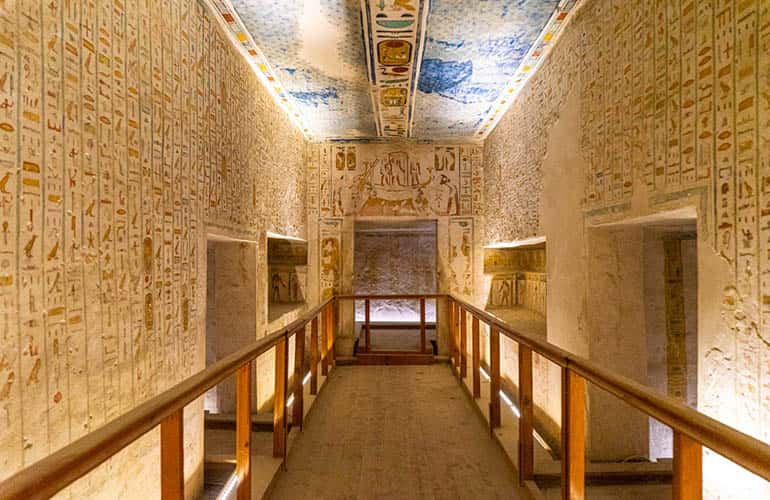
Valley of the Kings map
Each of the tombs in the Valley of the Kings was part of a whole royal mortuary complex. Thus, the tomb, conceived to house the body of the pharaoh with all his funerary objects, was always linked to a temple located near the Nile, from where the mortuary cult was conducted.
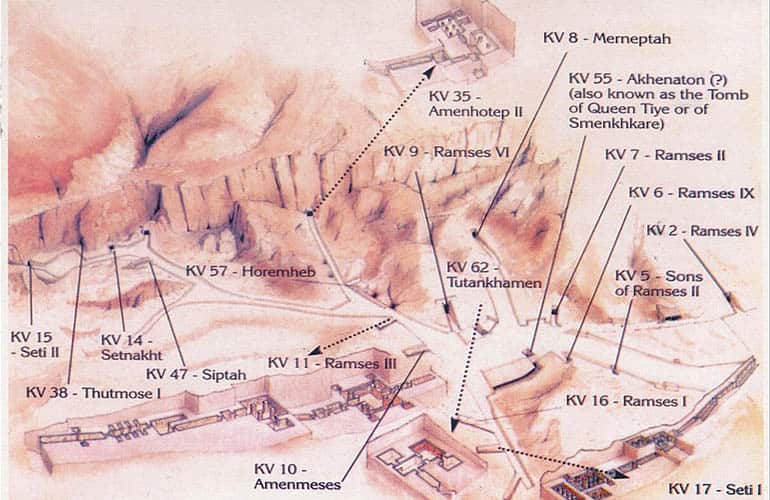 (Image source: flickr.com)
(Image source: flickr.com)
How the Valley of the Kings was built?
Before starting the work, it was customary to carry out a ritual ceremony that consisted of depositing offerings and different work tools in some holes, as can be seen from the remains found in several tombs in the Valley of the Kings.
Then the surface where the tomb was to be built was cleaned of debris and the stonemasons began work. The tombs were dug out of the ductile limestone on the slopes of the valley, of a very irregular quality depending on the area.
In fact, sometimes the cracks in the rock forced the alteration of the original plan and it was not always possible to get rid of the stones.
In some records, the consignment and subsequent return of each of these tools were carefully noted to avoid armholes. The chisels were easily removed, so it was usual to return them for sharpening.
As the stonecutters removed the stone blocks, the rubble was taken out of the tomb by means of rudimentary baskets.
Once the work was completed beyond the first passage, the whitewashers prepared the walls so that they could be decorated. If the stone was of good quality, a thin layer of plaster was sufficient, but when it was not, the walls had to be leveled and the cracks filled in.
1- KV1 – Ramesses VII
KV1 tomb belonging to Pharaoh Ramesses VII, which was found in the Valley of the Kings on the west bank of the Nile near the city of Luxor. This tomb of the sixth pharaoh of the twentieth dynasty was open since ancient times and is the first in the Valley of the Kings.
Little is known about this pharaoh called Ramesses VII, whose coronation name, only that he ruled from 1136 to 1129 B.C. but there is no data about his politics since he was not a major king of the 20th dynasty. It is estimated that he was the son of Ramesses VI, and with this, the line is cut because the next to rule will be an uncle of his and not a son.
As with the other royal tombs of the nineteenth and twentieth dynasties, the tomb KV1 has a straight axis that faces east, the unusual thing is that it is far from most of the tombs, this is in a part of the valley called the Valley of the Tomb of Ramesses VII and being isolated did not receive as many visitors as the others.
KV1 is an incomplete tomb, with a very simple structure, the entrance ramp, a corridor, and the burial chamber, behind which you can see a second chamber that was incomplete after the premature death of the ruler.
This tomb is one of the smallest royal burials in the whole necropolis but it has an important decoration for the time, the corridor B has representations of the Book of the Caverns and the Opening Ritual of the Mouth of the deceased; burial chamber J has inscriptions from the Book of the Earth and chamber K has decorations that refer to the Book of the death.
In addition, there are many representations of the most important gods such as Osiris, Ra- Horajti and Nut among others, those who accompany the monarch or appear alone; on the ceiling of the chamber, you can see figures of vultures and astronomical designs.

Tomb KV1
The evidence that this tomb has been open for many centuries is Coptic, demotic, Greek and nineteenth-century graffiti. Despite this, it is a tomb that is in a fairly good general state, the only regrettable thing is that the paintings made in blue have been lost and cracks have formed in Corridor B.
The sarcophagus of Ramses VII was carved in stone on the outside and the lid is decorated with figures of the four sons of Horus, Serket, Nephthys, and Isis. As for the mummy, it is one of those not yet recognized, it is estimated that the body is one of those still to be identified among those found at the site.
2-KV2 – Ramesses IV
The tomb of Ramesses IV (KV 2) is located in the Valley of the Kings.
Although it is a large tomb it is very simple, a straight passage and lacks a burial shaft.
It was used in antiquity as a dwelling and on its walls, you can see Coptic and Greek graffiti.
The entrance begins with two stairs enclosed by ramps that lead to some corridors.
One of the corridors leads to an antechamber and then to the burial chamber.
It is a tomb that has no side annexes.
The corridors are very unusual in both length and width.

The walls are decorated with scenes of the king’s coronation, as well as a scene depicting the goddesses Isis and Nephtys worshipping the solar disk.
Within the first two corridors, the scenes show us images and texts from the book of The Litany of Ra.
Vultures, hawks and winged beetles can be seen on the roofs.
In the third corridor, we can see the second part of the Book of the Caves, with ceilings decorated with simple stars, which later becomes a vault.
The antechamber is decorated with scenes from the Book of the Dead, especially chapter 125 that refers to the sentence.
The burial chamber, which is not large, is occupied by the sarcophagus that is still in place and is decorated with images from the second, third and fourth hours of the Book of the Doors.
On the ceiling, there are scenes from the Book of Nut, and the Book of the Night.
The annexes behind the burial chamber contain the text of the first part of the Book of the Caverns.
Other parts of this annex are painted with funerary offerings, such as beds, altars, and canopy glasses.
Inside the tomb, there are no pillars and the images of the Amduat are absent.
3-Tomb of KV6 – Ramesses IX
The last splendidly decorated tomb in the Valley of the Kings is that of a king Ramesses IX reigned for eighteen years (1125 – 1107). His mummy was discovered in the hiding place of Deir el-Bahari In the architectural field,
One of the scenes from the tomb of Ramesses IX is very moving; it shows the king making offerings to ”the one he loves in silence”, the goddess of the Theban summit who protects the Valley of the Kings.
As a result of serious errors, the tomb of Ramses IX is today degraded and the very existence of its reliefs is threatened. It is one of the monuments that must be urgently restored.

4- KV8 – Merenptah
Merneptah He is the 13th son of Ramses II and the 3rd of Queen setnofret.
Merenptah ascended the throne at a very advanced age, between 55 and 60 years old, after the disappearance of his elder brothers and a co-regency with his father of 12 years.
Merenptah successively occupied the highest offices during the reign of Ramses II, during a career in the royal administration, then in the army.
KV8 – Merneptah tomb
Merenptah’s tomb is much simpler than that of his father Ramesses II. It consists of three sloping corridors that lead to a small chamber and the columned hall with a side chamber.
In its center, a descent leads to a sloping corridor that leads to a chamber beyond which a second corridor descends into the burial chamber. The tomb extends over a total length of just under 165 meters. This vaulted burial chamber, which is quite large, was supported by two series of pillars that were initially decorated.
The tomb is decorated with scenes: the Litanies of Ra, the Book of Gates whose final chapter still appears partially on the north wall, the Book of the Dead, the Book of the Earth, the Book of Caverns (or Book of the Underworld), the ritual of the opening of the mouth and representations of the deceased with deities.
The ceiling of the burial chamber contains astronomical symbols. Floods have damaged the pillars. Most of the scenes beyond the columned hall were destroyed, except for those high up and on the ceiling.

The decorative program of the burial chamber included a complete copy of the Book of Doors, the final chapter of which still appears partially on the north wall.
The burial chamber had a set of four sarcophagi. Three of them were made of pink granite and the one containing the mummy was made of alabaster.
In order to introduce the sarcophagi into the tomb, the door jambs were dug out and then replaced with sandstone blocks. The third sarcophagus was discovered by Pierre Montet. Merneptah is represented in Osiris. The lid of the second external granite sarcophagus has been returned to its original location in the tomb.
It depicts the King lying down, topped with the names. The lid of the first outer sarcophagus, also made of granite, was found in one of the antechambers of the tomb. The mummy of Merenptah was found in the hiding place of tomb KV35, discovered on 9 March 1898 by Victor Loret, in the middle of 18 others.
5- KV8 – Merneptah tomb
Seti II Tomb | KV15 | The son of King Merenptah
Seti II Tomb Located in the southwest corner of the Valley of the Kings, the tomb of Seti II was dug a few meters from that of his wife Taousert.
The tomb was opened in antiquity, as evidenced by graffiti, and was visited by Europeans from the 18th century onwards. The tomb was finally cleared at the beginning of the 20th century by Carter, but questions remain about the history of its creation, decoration, and use. Due to the relative brevity of his reign, the Seti II Tomb | KV15 will be unfinished at the time of his death and will remain so.
The beautiful quality of the engraved relief and paintings in the first corridor is followed in the rest of the tomb by a hastily made decoration. The plan of the tomb is simple and shortened due to the cessation of work. The remains of the pharaoh would have been moved to prevent them from being degraded by the incessant looting at certain times. Unfortunately, it was nevertheless dislocated and identification was only made possible thanks to certain amulets still present on the mummy.
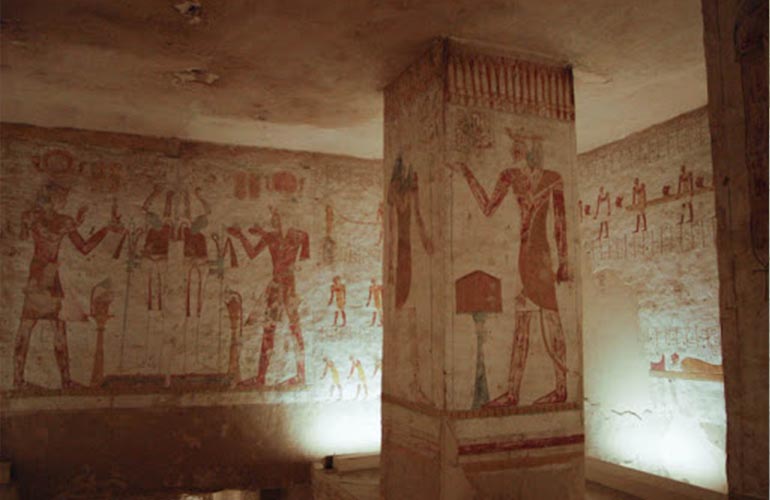
The Valley of the Kings is a place full of history and the best way to get to know it is through a private Egyptologist tour guide who will show you all details that, if you go on your own, could go unnoticed.
You can see of Luxor tourist attractions, in which you can also know the Valley of the Queens, the Colossi of Memnon and the Temple of Hatshepsut with the best private tours of Egypt, Egypt Nile cruise packages.
Kindly note with the basic ticket, you will have access to the three tombs you want, except the Tutankhamun, which requires a special ticket, and the Seti I.

